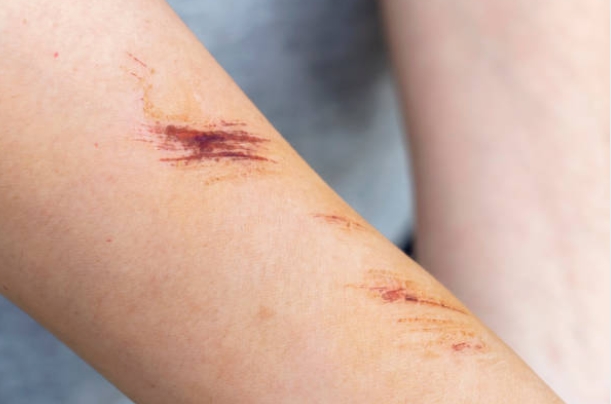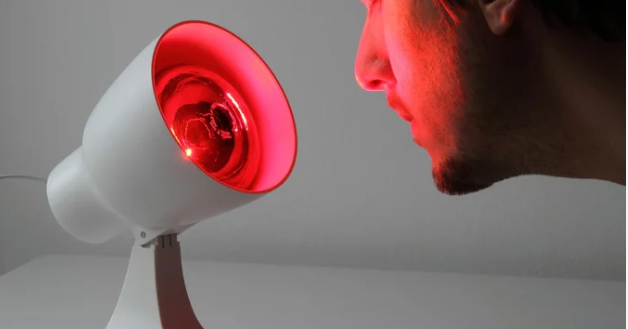Can red light therapy be used on an open wound? Well, you’re in the right place! Red light therapy is gaining popularity as a non-invasive treatment option for various conditions, including wound healing. In this article, we will explore the phases of wound healing and the role of light therapy in this process.
We will also discuss whether red light therapy can be used on open wounds, along with guidelines and best practices to ensure its effectiveness. However, it’s important to note that there are instances when red light therapy should be avoided.
So, if you’re curious whether red light therapy can help with your open wound, keep reading to find all the essential information you need!
Phases of Wound Healing
During the inflammatory phase of wound healing, your body’s immune system responds to the injury by sending white blood cells to the site of the wound. This phase typically lasts a few days and is characterized by redness, swelling, and warmth.
In the proliferative phase, new blood vessels and collagen are formed to help rebuild the damaged tissue, and this phase can last for several weeks.
Finally, the newly formed tissue is strengthened and reorganized in the remodeling phase to restore its normal function.
1. Inflammatory Phase
In the inflammatory phase, you’ll be amazed at how red light therapy can accelerate healing and soothe your open wound. During this phase, which typically lasts a few days, your body initiates an immune response to protect against infection and remove debris from the wound.
Red light therapy can help by increasing blood circulation to the area, delivering more oxygen and nutrients to promote faster healing. The red light also stimulates the production of collagen, a key component in tissue repair. This can help your wound close more quickly and reduce the risk of scarring.
Additionally, red light therapy has anti-inflammatory properties, which can help alleviate pain and swelling associated with the inflammatory phase. So, if you’re dealing with an open wound, consider incorporating red light therapy into your healing routine for optimal results.
2. Proliferative Phase
Throughout the proliferative phase, your body builds new tissue to replace the damaged area and restore strength and function. This phase typically lasts from day four to day 21 after an injury. During this time, the wound becomes filled with new blood vessels and collagen essential for healing.
Red light therapy can play a crucial role in this phase by promoting the growth of new blood vessels and collagen synthesis. It helps increase blood flow to the area, delivering oxygen and nutrients necessary for tissue regeneration. Red light therapy can also stimulate fibroblasts, which produce collagen and other connective tissue components.
By using red light therapy during the proliferative phase, you can accelerate the healing process and improve the overall outcome of your wound.
3. Remodeling Phase
The remodeling phase is critical in healing, strengthening, and reshaping new tissue. During this phase, the body continues to repair the wound by gradually replacing the temporary tissue formed in the previous proliferative phase with more substantial and functional collagen fibers.
Red light therapy can be beneficial during this phase as it promotes collagen production and accelerates remodeling. By exposing the wound to red light, the therapy stimulates the activity of fibroblasts, which are responsible for producing collagen. This helps build more muscular and organized tissue, reducing scar formation and improving the overall appearance of the wound.
However, you must consult a healthcare professional before using red light therapy on an open wound to ensure it’s appropriate for your situation.

Role of Light Therapy in Wound Healing
Light therapy’s role in wound healing can stimulate cellular activity, enhancing healing. By using red light therapy, you can increase the production of ATP, which provides energy to the cells and promotes tissue repair.
Light therapy can also help reduce inflammation by decreasing the release of pro-inflammatory mediators and increasing the release of anti-inflammatory factors.
1. Stimulation of Cellular Activity
Red light therapy on an open wound can boost cellular activity, promoting faster healing and tissue regeneration. When red light is applied to the wound, it penetrates deep into the skin and stimulates the mitochondria, which are the powerhouses of the cells. This stimulation triggers a series of biochemical reactions that increase the production of ATP, the energy currency of the cells.
As a result, the cells have more energy to carry out their functions, such as synthesizing collagen, promoting angiogenesis, and forming new blood vessels. Additionally, red light therapy has been shown to reduce inflammation and pain, further aiding healing.
If you have an open wound, incorporating red light therapy into your treatment plan may help accelerate healing and improve overall outcomes.
2. Reduction of Inflammation
Now, let’s delve into the remarkable benefits of red light therapy in reducing inflammation. When you have an open wound, inflammation is a natural response of your body’s immune system. However, excessive inflammation can impede healing and prolong your recovery.
This is where red light therapy comes into play. By targeting the affected area with its soothing energy, red light therapy helps to decrease inflammation and promote faster healing. The red light stimulates the production of anti-inflammatory cytokines responsible for reducing swelling and pain. Additionally, it enhances blood circulation, delivering essential nutrients and oxygen to the wound, further aiding in its healing.
So, if you have an open wound, incorporating red light therapy into your treatment plan can significantly reduce inflammation and accelerate your recovery.
Using Red Light Therapy on Open Wounds
Contrary to popular belief, red light therapy is a safe and effective treatment for open wounds. When applied to an open wound, red light therapy stimulates the body’s natural healing process, promoting faster tissue repair and reducing the risk of infection.
The red light penetrates the skin, reaching the underlying tissues and cells, where it helps to increase blood flow and oxygenation. This boost in blood circulation promotes the delivery of essential nutrients and immune cells to the wound site, which aids in the healing process.
Additionally, red light therapy has been shown to reduce inflammation, alleviate pain, and improve collagen production, which are crucial for wound healing.
So, if you have an open wound, consider using red light therapy as a safe and effective treatment option.
Guidelines and Best Practices
In this discussion, you’ll explore guidelines and best practices for using red light therapy on wounds. You’ll learn about the types of wounds suitable for this therapy, including chronic and acute wounds.
Additionally, you’ll discover the recommended dosage, wavelength, frequency, and duration of treatment.
1. Types of Wounds Suitable for Red Light Therapy
Imagine healing your wounds faster with a simple, non-invasive treatment like red light therapy. This innovative therapy has shown promising results in promoting wound healing and reducing inflammation. However, not all types of wounds are suitable for red light therapy. It is essential to consult with a healthcare professional before using this treatment on an open wound.
Red light therapy is particularly effective for superficial wounds such as cuts, abrasions, and burns. It can also be beneficial for diabetic ulcers and pressure sores. The red light stimulates cellular activity, increasing blood flow and collagen production, which aids in the healing process.
However, deep wounds, puncture wounds, or wounds with exposed bone or tendons should not be treated with red light therapy, as they may require more intensive medical intervention. Always prioritize your health and seek professional advice for the best course of treatment.
2. Chronic vs. Acute Wounds
Understanding the difference between chronic and acute wounds is essential when it comes to healing wounds.
Acute wounds are sudden injuries that heal within a predictable timeframe, usually within a few weeks. These can include cuts, burns, or surgical incisions.
On the other hand, chronic wounds are those that do not heal in a timely manner, often lasting for months or even years. These types of wounds, such as diabetic ulcers or pressure sores, are often caused by underlying health conditions or poor blood circulation.
While red light therapy has shown promising results in promoting healing for chronic wounds, it is essential to consult a healthcare professional before using it on an open wound. They can guide the appropriate treatment options and ensure the wound is adequately cared for.
3. Recommended Dosage and Wavelength
Following the recommended dosage and choosing the correct wavelength for your red light treatment is essential. When using red light therapy on an open wound, it’s crucial to use the appropriate dosage and wavelength to promote healing without causing any harm.
The recommended dosage typically ranges from 4 to 20 joules per square centimeter, depending on the severity of the wound. It’s essential to consult a healthcare professional to determine the ideal dosage for your specific situation.
As for the wavelength, red light therapy commonly uses wavelengths between 600 and 850 nanometers. This range has been found to stimulate cellular activity and enhance the wound-healing process effectively.
Adhering to the recommended dosage and selecting the right wavelength can maximize the benefits of red light therapy on your open wound.
4. Frequency and Duration of Treatment
Get ready to experience the excellent benefits of incorporating regular sessions of red light treatment into your healing routine! Regarding frequency and duration of treatment for open wounds, it’s essential to follow specific guidelines.
It’s generally recommended to have red light therapy sessions three to five times per week for optimal results. Each session should last around 5 to 15 minutes, depending on the severity and size of the wound.
However, consulting with a healthcare professional or certified red light therapy provider is crucial to determine the appropriate frequency and duration for your specific case. Remember, consistency is vital when utilizing red light therapy for wound healing, so stick to the recommended schedule to maximize effectiveness.
Instances When Red Light Therapy Should Be Avoided
Avoid red light therapy on open wounds as it may hinder healing. When you have an open wound, providing the right environment for the wound to heal naturally is essential. While red light therapy can benefit various conditions, it isn’t recommended for open wounds.
Exposing an open wound to red light can delay healing by interfering with the body’s natural repair mechanisms. The light may cause inflammation and heat, further damaging the delicate tissues surrounding the wound. It’s crucial to allow the wound to heal without external interference, such as red light therapy.
Instead, focus on keeping the wound clean and protected and following your healthcare provider’s instructions for proper wound care.

Conclusion
So, can you use red light therapy on an open wound? The answer is yes but with caution. Red light therapy has been shown to aid in wound healing by reducing inflammation and promoting cell regeneration. However, following guidelines and best practices are essential to ensure proper treatment.
Always consult a healthcare professional before attempting red light therapy on an open wound, and be aware of instances when it should be avoided. With proper care and guidance, red light therapy can be a beneficial addition to wound healing protocols.
